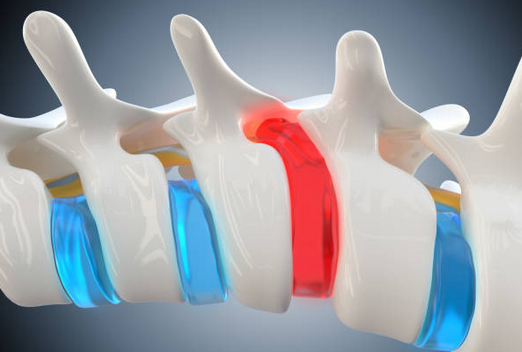The spinal disc is a soft cushion that sits between each vertabrae of the spine. The spinal discs are composed of a tough outer cartilage (annulus fibrosus) with a squishy center (nucleus pulposis). Like a shock absorber for a car, the disc is the shock absorber for the spine. When too much pressure is placed on the disc, it bulges or herniates. Think of it like a jelly doughnut. Squeeze it too hard and the jelly comes out. That is called a Herniated Disc (Slipped Disc, Bulging Disc).
Herniated Discs
Herniated and Bulging Discs
Patient Testimonials
On my first visit, I pretty much needed to be carried in by two people. I am a grown man and I actually had to use a walker just to get around because the pain was so bad. The pain I felt was indescribable. An MRI showed an L5/S1 disc herniation. I had the same thing 2 years back and it took over a year to fully recover. My first visit of spinal decompression was very painful and felt no relief. The 2nd visit gave me much relief and by the end of the first week, I could walk without help. I looked forward to each day because I knew I would feel better each time. The Doctor knew just what to do to help me. I was so happy that the visits were so relaxing and each provided more relief from the pain. I have never been to any Doctor of any kind that really cared this much. Instead of it taking a year to heal this time, I was back 100% within 2 months.
~ Brent P.
I had a herniated disc at L3 and L5, according to my MRI. My right side was in excruciating pain from my disc pushing on my sciatic nerve. My foot was numb and tingly all the time. I was in the E.R. every weekend. I was taking all kinds of pain pills, was in a wheelchair for 2 months and used a walker for 1 month. I knew the pills could cause damage to my liver and kidneys but I didn’t know what else to do. They were also becoming very addictive and that made me scared. I was three days from having back surgery when I saw an ad in the newspaper. I came down to the office and the Doctors explained everything. The doctor’s put me on the Decompression Table and only 6 weeks later my back and leg feel wonderful. No more pain pills for me. I cannot say enough about Spinal Decompression! I recommend it to anyone with back or neck pain.
~ Hilma S.

